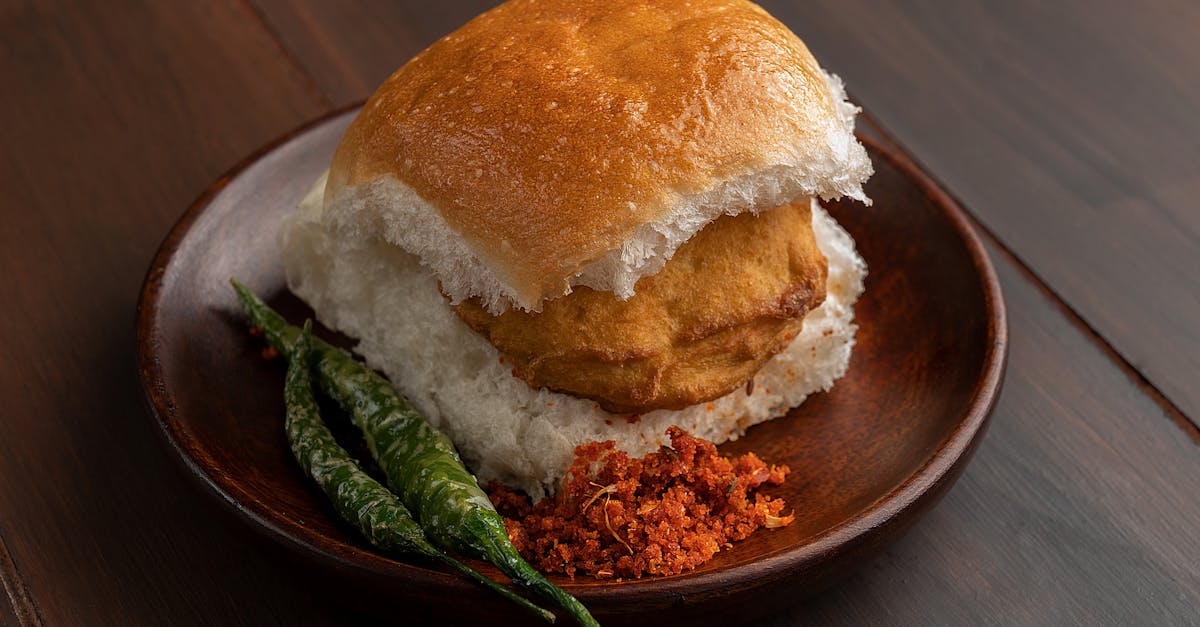Introduction
Anyone who’s spent more than a few hours in Mumbai knows that the city’s heart beats to the rhythm of its street food vendors. From the iconic vada pav to the lesser-known, but equally delicious, kachori, Mumbai’s streets are filled with flavors that speak to the city’s soul. But in recent years, something exciting has been happening: Mumbai’s street food culture is evolving. While some might argue that the authenticity of traditional recipes is at risk, others are celebrating this shift as an opportunity for culinary innovation. So, what’s really going on with Mumbai’s street food scene today?
Tradition Meets Innovation
It’s hard to ignore the buzz around fusion foods, especially in a city like Mumbai, where culinary influences collide daily. Think of a vada pav stuffed with cheese, or a pav bhaji served in an edible bowl made of roti. At first glance, you might be skeptical. After all, can a classic like vada pav really benefit from a twist? But as anyone who has tried these innovative versions will tell you, they bring something new to the table—both literally and figuratively.
Street food in Mumbai has always been a reflection of the city’s evolving identity. Whether it’s the influence of Gujaratis, Marathis, or even international cuisines, food vendors have adapted over time. The new age of street food doesn’t just preserve tradition—it pushes the boundaries. A perfect example is the growing trend of vegan versions of classic Indian dishes. From vegan pav bhaji to vegan bhel puri, these dishes are catered to a new generation of foodies looking for healthier or ethical alternatives without compromising on flavor.
The Role of Technology in Changing Street Food
Believe it or not, technology is playing a key role in shaping street food in Mumbai. With food delivery apps, like Zomato and Swiggy, bringing street food right to your doorstep, many vendors are now reaching an audience they could have never imagined. The days of having to fight your way through a crowd for a plate of dahi puri are over. Now, you can enjoy it from the comfort of your home with a few taps on your phone.
But it’s not just about convenience; it’s also about innovation. Some vendors have started using social media platforms like Instagram to showcase their creations, leading to viral trends. From Instagrammable rainbow dosas to quirky fusion snacks, vendors are tapping into the power of online influence to attract crowds and build a loyal customer base. It’s no longer enough to just serve great food; you need to make it visually appealing too. After all, who doesn’t love a colorful, drool-worthy dish that looks good enough to share?
The Changing Demographics of Street Food Lovers
Another fascinating shift is the demographic of people who are flocking to Mumbai’s street food vendors. While the traditional street food crowd was primarily local—office workers grabbing a quick bite, or college students looking for a budget-friendly meal—the scene is now seeing more tourists, expats, and even high-end food critics walking the same streets.
This shift is partly due to the changing image of street food. Where once it was seen as quick, cheap, and possibly unhygienic, street food in Mumbai is now considered an authentic culinary experience. The rise of food tours that take tourists to the best street food spots in the city has played a significant role in this. It’s not uncommon to see a group of foreigners crowded around a vendor, trying to figure out how to eat their first plate of pav bhaji or bhel puri without making a mess. The excitement and curiosity of newcomers blend with the familiarity of locals, creating a vibrant, welcoming atmosphere.
The Sustainability Factor: Eco-Friendly Street Food
In a city as large as Mumbai, sustainability is an ongoing challenge, but it’s also an opportunity. More and more street food vendors are adopting eco-friendly practices. Gone are the days of single-use plastic containers and Styrofoam plates. Instead, you’ll see food wrapped in banana leaves, served in reusable steel containers, or packed in eco-friendly paper wraps.
The movement is gaining traction not only because it’s environmentally responsible but also because customers are becoming more conscious of their choices. Vendors who take the extra step to serve their dishes with sustainability in mind are finding that it pays off—both in terms of customer loyalty and social media attention. Just take a walk through Mumbai’s street food hub at Juhu Beach or the local food markets of Andheri, and you’ll spot biodegradable plates and paper straws making a comeback.
Keeping It Local: The Future of Mumbai Street Food
Despite all these changes, there’s a common thread that ties Mumbai’s street food together: it’s still deeply rooted in the city’s history and culture. No matter how many innovative twists emerge, classic street food dishes will always be at the core of this culinary movement. Whether it’s a simple bhel puri made with puffed rice, potatoes, and tamarind chutney, or a spicy misal pav enjoyed with a hot cup of chai, these dishes are more than just food—they’re a part of the city’s identity.
And perhaps that’s the key takeaway for the future of Mumbai street food. As long as there’s a balance between tradition and innovation, the culture will continue to thrive. The old and new can coexist, with innovation adding new layers while keeping the essence intact. In fact, maybe that’s what makes Mumbai’s street food scene so unique—it’s a reflection of the city itself: ever-changing yet always familiar.
Conclusion: A Food Lover’s Paradise
As we look to the future of Mumbai’s street food scene, it’s clear that it’s not just about what’s on the plate, but how it’s prepared, presented, and shared. The blending of tradition with new ideas, along with the rise of sustainability, is creating a dynamic culinary culture that speaks to the heart of Mumbai itself. Whether you’re a long-time local or a first-time visitor, there’s always something new to try—and the best part is, you can do it without breaking the bank.
So next time you’re walking through the crowded streets of Mumbai, take a moment to savor the flavors that tell the story of the city—old and new, classic and contemporary, all in one bite.



